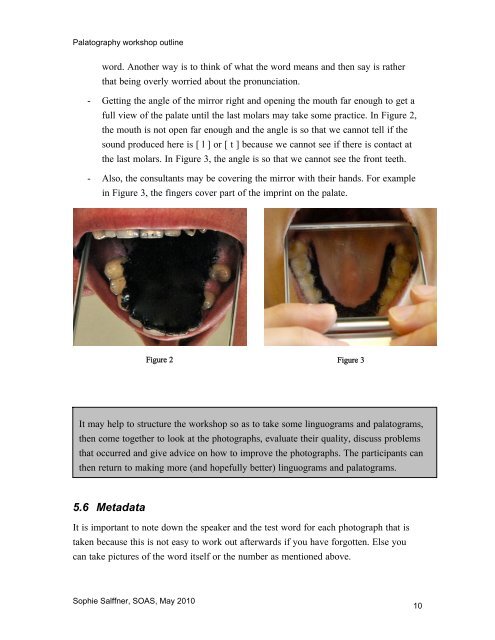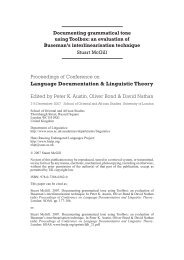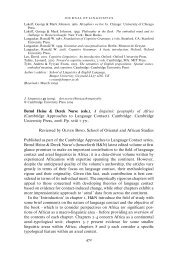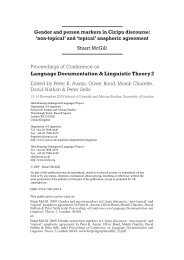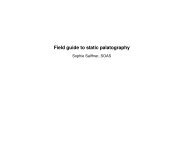Palatography – Phonetics tutorial week 10
Palatography – Phonetics tutorial week 10
Palatography – Phonetics tutorial week 10
You also want an ePaper? Increase the reach of your titles
YUMPU automatically turns print PDFs into web optimized ePapers that Google loves.
<strong>Palatography</strong> workshop outline<br />
word. Another way is to think of what the word means and then say is rather<br />
that being overly worried about the pronunciation.<br />
- Getting the angle of the mirror right and opening the mouth far enough to get a<br />
full view of the palate until the last molars may take some practice. In Figure 2,<br />
the mouth is not open far enough and the angle is so that we cannot tell if the<br />
sound produced here is [ l ] or [ t ] because we cannot see if there is contact at<br />
the last molars. In Figure 3, the angle is so that we cannot see the front teeth.<br />
- Also, the consultants may be covering the mirror with their hands. For example<br />
in Figure 3, the fingers cover part of the imprint on the palate.<br />
Figure 2<br />
Figure 3<br />
It may help to structure the workshop so as to take some linguograms and palatograms,<br />
then come together to look at the photographs, evaluate their quality, discuss problems<br />
that occurred and give advice on how to improve the photographs. The participants can<br />
then return to making more (and hopefully better) linguograms and palatograms.<br />
5.6 Metadata<br />
It is important to note down the speaker and the test word for each photograph that is<br />
taken because this is not easy to work out afterwards if you have forgotten. Else you<br />
can take pictures of the word itself or the number as mentioned above.<br />
Sophie Salffner, SOAS, May 20<strong>10</strong><br />
<strong>10</strong>


